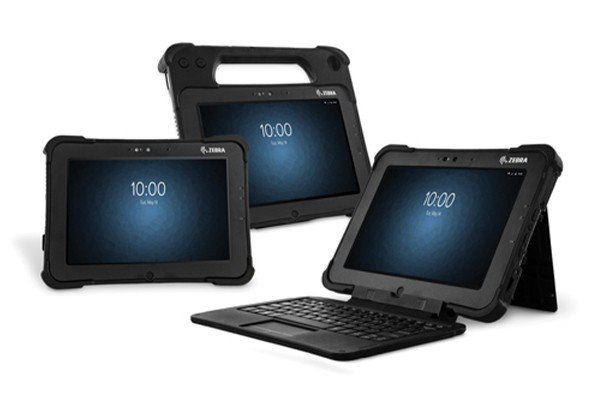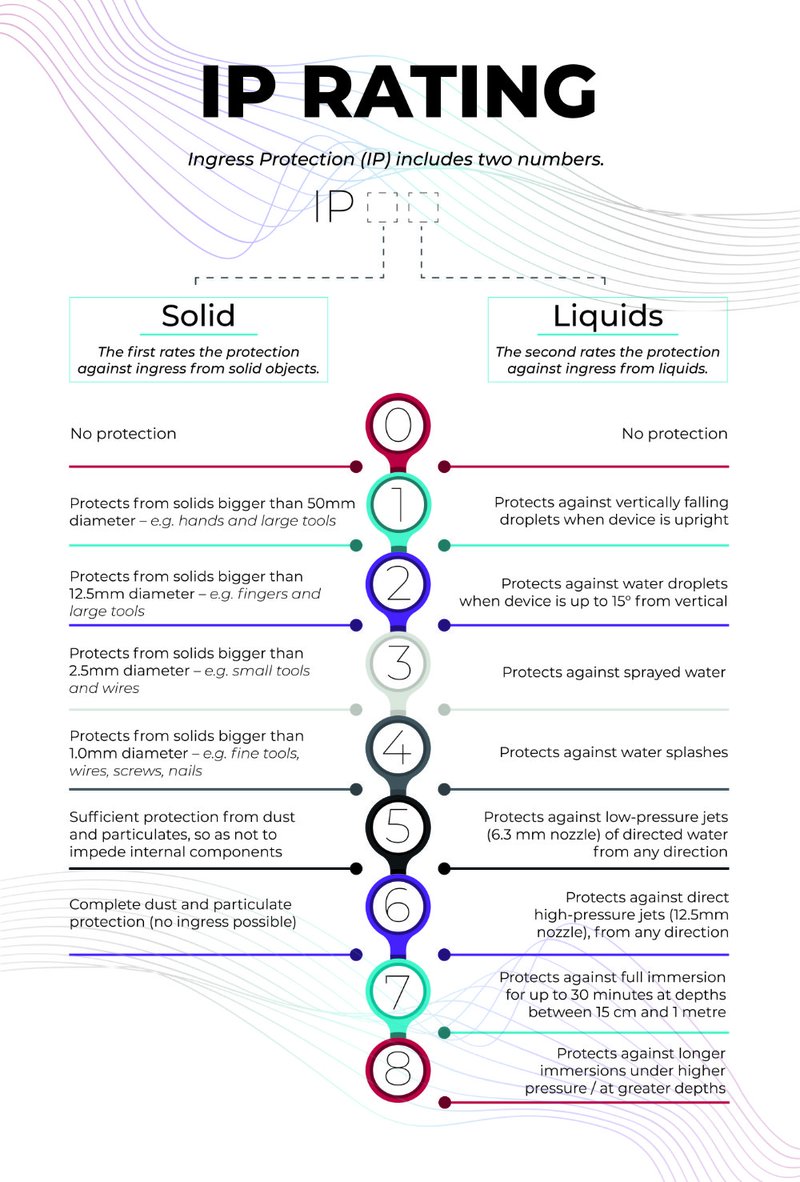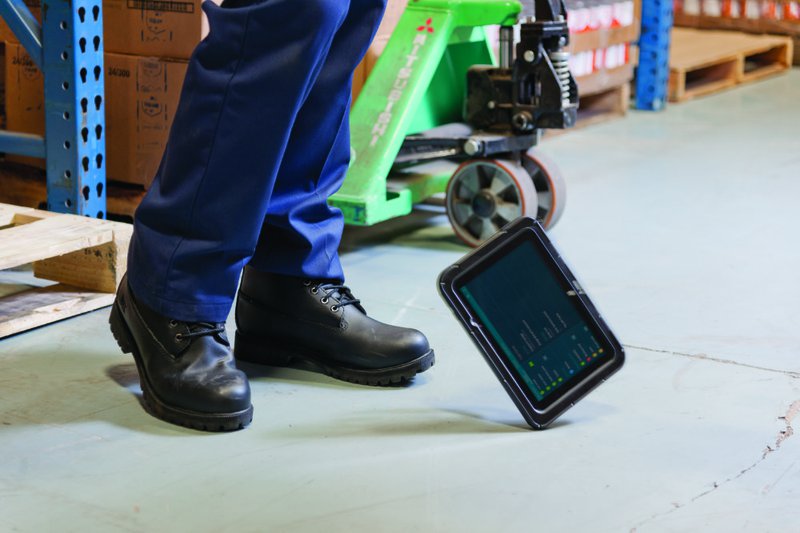‘Durable’ and ‘robust’ are words commonly used in marketing and the media to describe mobile devices. However, anyone procuring technology for a business will be right to look for something more precise.
So, what exactly is a rugged device and how can you tell when you have one in your hands?
Fortunately, there are ways to pin down that definition and make an educated choice for your business. In this short guide, we’ll look at what makes a device rugged. We’ll also examine MIL-STD 810G* and IP ratings, as well as details around performance at different temperatures, to help you ensure you’re getting something that will stand up to the stresses and strains of your workplace for years to come – and adds up to a great return on your investment.

Rugged: A Definition
In its simplest terms, a rugged device will work in challenging environments without failure. This is because good-quality rugged devices are toughened, with a stronger screen, thicker case and tighter seals, to protect against water, shock, vibration, dust and other potentially harmful factors.
However, they are not simply standard devices wrapped in a hard outer shell. Rather, a quality rugged device is designed for robustness from the inside out. Here’s one example of this inside out approach: many rugged devices have solid state hard drives (SSD) rather than hard disk drives (HDD), because SSDs have no moving parts and a high degree of shock resistance.
Some websites refer to three classes of rugged phones: ‘semi rugged’, ‘fully rugged’ and ‘ultra rugged’. In our view, identifying between these vague definitions quickly gets confusing. A far more precise approach is to take a close look at the factors mentioned in the introduction that truly measure a phone’s ruggedness: MIL-STD 810G certification, IP ratings, and performance across different temperature ranges. Once you understand these, you’ll be in a good place to assess the true ruggedness of a phone.
What is an IP Rating?
Ingress Protection (IP) ratings have been developed by the European Committee for Electro Technical Standardization to describe the environmental protection offered by a device’s enclosure.
There are two things we need to keep out of our devices – solids and liquids. IP ratings describe a device’s resistance to each of these.
- Protection Against Solids is rated from 0 to 6, with zero offering no protection and six offering total protection against dust.
- Protection Against Liquids is rated from 0-8, with zero offering no protection and eight protecting against long periods of immersion under pressure.

The actual IP rating you’ll see on a phone packaging or marketing materials is made up of two numbers, the first of which addresses solids and the second liquids. For instance, IP67 would offer a solid protection of 6 and a liquid protection of 7.
To put this into context, according to VDC Research a device should be rated at a minimum of IP54 to be considered fully rugged. However, rugged expert Zebra recommends a rating of at least IP65 to ensure the longest life for your rugged tech and a suitable return on investment. This provides a sufficient level of ruggedness against dust and protects against water from any direction, so will protect against spills. However, it will not protect against immersion in water, so if this is important seek a higher rating.
What is MIL-STD 810g?
What would happen to your device’s functionality if it were dropped again and again from height? The correct answer should be very little at all, providing it has passed the MIL-STD 810G drop test. This is a rating designed by the US Department of Defense and is used to ensure technical equipment can withstand being dropped from four feet, onto two inches of plywood over concrete, at various angles.
There are a wide range of MIL-STD 810G tests, ranging from the ‘drop’ or ‘shock’ test outlined above (these terms refer to the same test) to various others measuring the effects of humidity, rain, vibration, immersion and more. When reading a MIL-STD 810G rating, ensure you know which test or tests it refers to and don’t assume it has passed them all.
Also, in the case of all tests, the devil really is in the detail. For instance, while the MIL-STD 810G drop test involves a drop onto plywood (the most common ground material in military installations) over concrete, the industry standard for phones is a drop straight onto concrete. Look out for this in detailed specs of any product you intend to buy. If it says ‘hard surface’ and not specifically concrete it almost certainly isn’t concrete, and the phone in question may not be tough enough for you.
Bear in mind also that by far the most common MIL-STD 810G test in relation to rugged technology is the shock / drop test; the industry typically uses the IP classification for ratings concerned with ingress.

What do you need to know about temperature?
Will a device remain functional in extreme heat or cold? While this information may not be given with reference to a particular industry standard or accreditation, any worthwhile rugged device will explicitly state the temperatures at which it will remain fully operational. A typical rugged device may include a range from -10° C to +50° C (14° F to 122° F). However, if your employees are working in cold storage environments, you’ll want your devices to operate as low as -30°C (-22°F). For a device to operate at this temperature, an internal heater is usually required.
Putting it all together
As a minimum, we recommend that your rugged phone has an Ingress Protection rating of at least IP 65 and has passed the MIL-STD 810G drop test, with a specific mention of a four-foot fall to concrete. Of course, this is a minimum requirement and you must think carefully about your needs in terms of ruggedness, particularly with reference to water ingress.
However, a word of caution. While IP ratings are achieved via independent certification, MIL STD 810G can be verified ‘in house’. This clearly isn’t ideal from a consumer point of view, so what can you do?
We recommend you ask two questions to any company selling rugged computers:
1) What tests do you or the manufacturer regularly undertake to ensure your technology is sufficiently rugged?
2) Is your warranty based on the product's IP rating and MIL STD 810G rating? For instance, if you drop the device from up to four feet onto concrete within the warranty period, is it covered? (If the answer is yes then the company is ‘putting its money where its mouth it’; if no, you might want to question why.)
You’ll also want to check reputable reviews of the company and of its products.
Nuffield Technologies helps businesses across many sectors source high-performing rugged technology that confirms to stringent tests according to both the Ingress Protection and MIL STD 810g standards. We can share detailed specifications of all of our devices’ rugged features and rugged tests with full transparency, to help ensure you are procuring fit-for-purpose technology for your business.
* Note: MIL STD 810G was superseded by MIL STD 810H in January 2019. However, with the majority of devices still testing to MIL STD 810G, we have used this standard to illustrate our post. As MIL STD 810H becomes more widely adopted, we will update this post to reflect the new standard.

